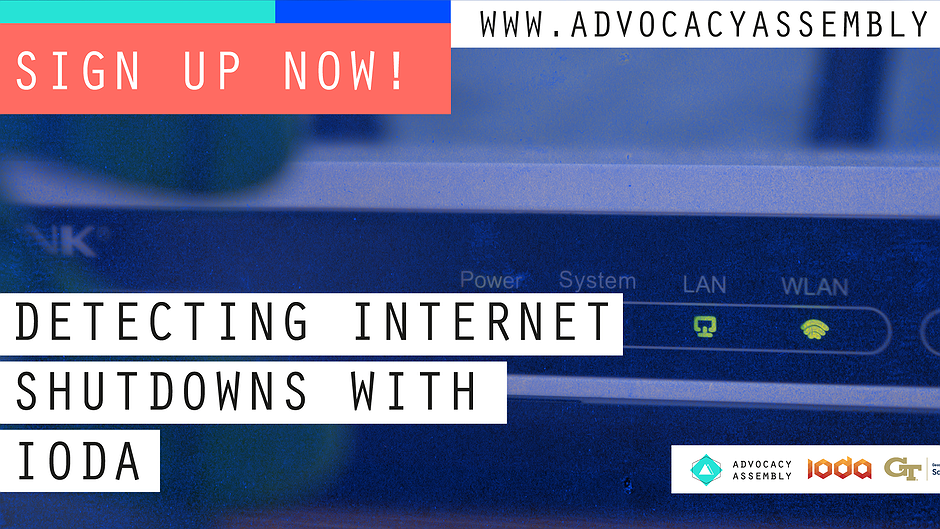
This online tool helps activists collect proof of connectivity disruptions
Oppressive authorities continue to deploy internet shutdowns and network disruptions to restrict access to information for people inside affected areas, cutting them off from the outside world, thus obstructing documentation of human rights violations.
Data from the past year show that incidences of internet shutdowns worldwide reached at least 187 documented disruptions in a record 35 countries – the highest number ever in a single year.
In Iran, at least 18 internet shutdowns were documented in 2022 alone. The majority of which were in response to protests or calls for demonstrations.
In our course ‘Detecting Internet Shutdowns with IODA’, Amir Rashidi, director of digital rights & security at the Miaan Group, spoke on how human rights defenders can use the IODA tool to identify and report on connectivity disruptions.
How does it work?
IODA provides the only publicly available dashboard that displays near real-time data on Internet connectivity at the country, region, and Internet operator level. It uses three different measurements as indicators of Internet connectivity. These measures, or signals, are collected in near real-time for constant monitoring of the Internet.
How to use it?
The IODA dashboard allows users to search a country, region, or specific Internet provider and select the time range. It has two different modes for visualizing data: simplified and advanced.
IODA is useful to the Internet freedom community because they can see evidence, duration, and geolocation of outages and shutdowns in near-real time. A guided step by step tutorial is available in our ‘Detecting Internet Shutdowns with IODA’ course.
How to navigate the local context?
Internet shutdowns in Iran occur at various levels, from local disruptions to nationwide outages. The government can selectively control internet access through the National Information Network (NIN), also known as the Iranian Intranet. Significantly, this pattern of shutdown provided a highly sophisticated level of tiered access allowing authorities to deny shutdowns.
The FilterWatch project, which aims to investigate and analyze Iran's internet policies and their effects on citizens' access to the online world, closely monitors the IODA dashboard to examine technical data on internet access in Iran.
“The IODA website gives us a broad picture of the country to understand better what is happening.”
Amir Rashidi, Director of Digital Rights & Security at the Miaan Group
FilterWatch relies on tools like IODA to track internet shutdowns, gaining insights into forthcoming crackdowns and demonstrations. By detecting disruptions, they can document these events and equip activists within Iran with valuable tools to challenge authorities' misinformation and advocate for civil rights. This gives the activists concrete proof of connectivity disruptions.
“Equipping yourself with tools that provide valuable data is vitally important to challenge the authorities on the misinformation they are providing. Especially inside the country!”
Amir Rashidi, Director of Digital Rights & Security at the Miaan Group
—
This is a case study from our course ‘Detecting Internet Shutdowns with IODA’, in our Internet Shutdown Academy, which features 10 courses in seven languages taught by experts from leading organisations. It is designed to educate activists, journalists, and anyone impacted by internet disruptions and online censorship.
Related courses

90 mins
 School of Data
School of Data
90 mins
 School of Data
School of Data Rory Peck Trust
Rory Peck Trust
50 mins
 Rory Peck Trust
Rory Peck Trust
Blogs

6 useful resources for journalists covering Covid-19
With a global pandemic spreading throughout the world, journalists are under increasing pressure to report accurate and relevant news for the masses. Often when covering a crisis, those on the reporting frontlines compromise their physical safety and mental health. To show some solidarity, the Advocacy Assembly team curated a list of useful resources from other organisations leading the way on this.

5 ways to find data for your next story
Data journalism is fast becoming a big trend in newsrooms across the globe. However, data isn’t always so easy to find. Here are five ways to get data for your next article.



